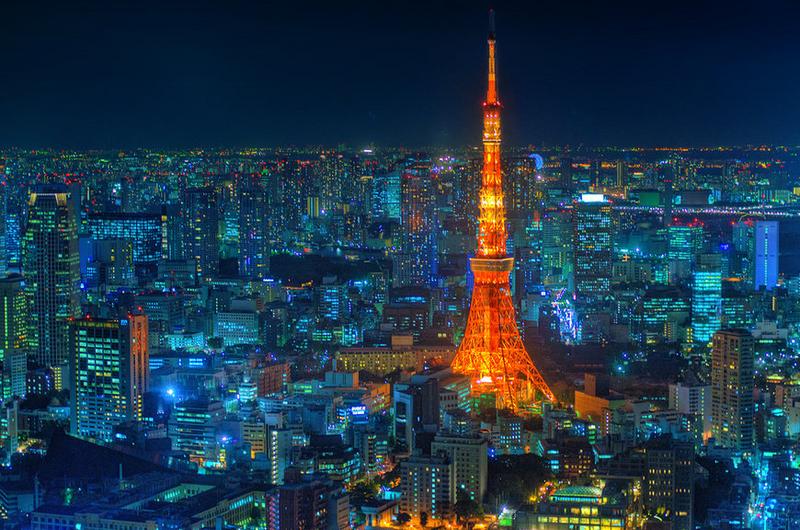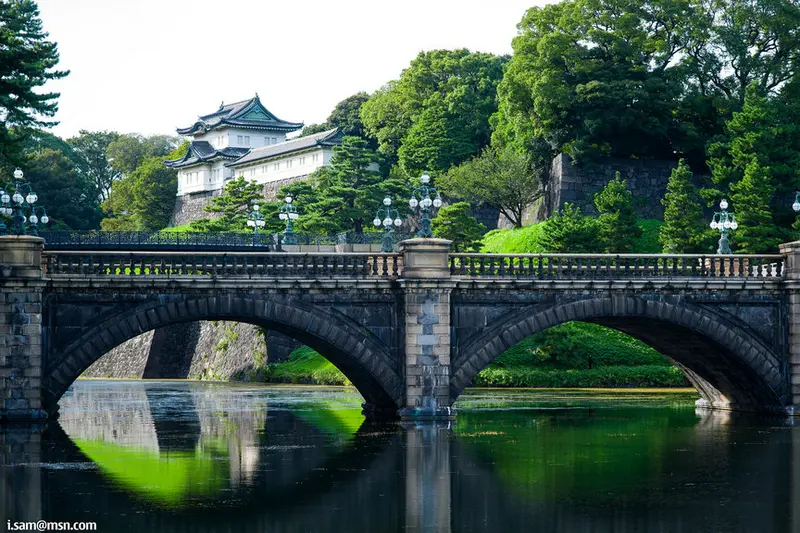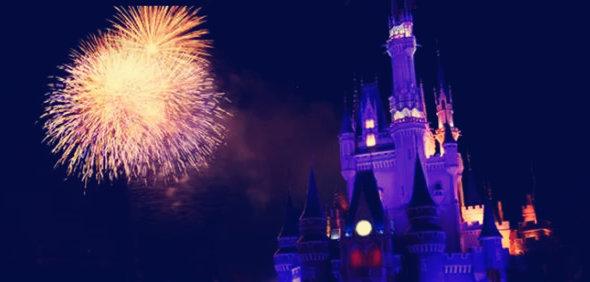"8-Day Tokyo Tour
1 cities |
21 attraction(s) |
total distance 98
km
 TIPS
TIPS
Day1
Day2
Day3
Day4
Day5
Day6
Day7
Day8
Day1: Tokyo
4 attraction(s) ·
4 km
1
Sensoji Temple is the oldest temple in Tokyo, built in 628. According to legend, a fisherman discovered a golden statue of the goddess Kannon and built a tower to enshrine it in the same spot. Later, it was expanded into its current size. During the Edo period, Tokugawa Ieyasu ordered the rebuilding of Sensoji Temple, which gradually became a cultural center.
Climbing the gate with a giant lantern, the Kaminarimon gate, is one of the symbols of Asakusa and even Japan. In the middle of the gate are statues of the gods of thunder and wind, and its formal name is "Furaijin Gate."
Through the shopping street, you can see the main hall, which gradually became prosperous because Ieyasu designated it as a place of prayer for the shogunate. In the northeastern corner of Sensoji Temple, there is also Asakusa Shrine, which was built in the Heian period and has an elegant and beautiful architectural style.
Every May, Sensoji Temple holds the Sanja Festival, one of the three major festivals in Edo, which is the grandest event in Asakusa. This festival originated in the Edo period and fully displays the traditional culture and human emotions of the time. In the activity of carrying the shrine, several dozen people dress up in the style of the old-fashioned and gather from various directions to Sensoji Temple, creating a lively atmosphere.
3
km
2
Ueno Park is one of Tokyo's famous parks, covering a large area and hosting multiple facilities such as a zoo, art museum, and museums. It also has a rich natural landscape, including famous landmarks such as Shinobazu Pond and Takegata Fountain. The park's most famous symbol is the bronze statue of Takamori Saigo. In spring, Ueno Park is a popular spot for cherry blossom viewing in Tokyo, where visitors can admire the beautiful cherry blossoms in full bloom.
1
km
3
If you only have time to visit one art museum, the Tokyo National Museum is the best choice. It is the largest and oldest museum in Japan, with over 89,000 items in its collection, including over 100 national treasures and over 500 important cultural properties. The museum is divided into five independent galleries: the Honkan, the Heiseikan, the Toyo Bunko, the Toyokan, and the Horyu-ji Treasure Gallery. The main building is designed in the traditional Japanese style known as the "Emperor's Crown," and is considered a masterpiece of museum architecture. The National Museum was originally known as the Imperial Museum and changed its name in 1952. The galleries are surrounded by lush green paths, creating a harmonious atmosphere between people, nature, and culture, which is quite different from the typical image of a cold and dull museum.
1
km
4
Ueno Zoo, established in 1882, is one of the oldest zoos in Japan. The zoo houses nearly 500 species of animals, including rare animals like pandas, elephants, and lions, which are highly beloved by the Japanese people. The zoo is divided into East and West areas, connected by a maglev train, making it the first maglev route in Japan. In 1972, China gifted two pandas to Ueno Zoo, and ever since then, pandas have been among the most popular animals in the zoo. The panda statues within the zoo have even become a scenic spot within Ueno Station, highlighting the significance of pandas in the area. In addition, Ueno Zoo also features a reptile house, a nocturnal animal house, an aquarium, and various themed exhibits, including llamas, polar bears, and ostriches. The Children's Zoo, specially designed for children, allows them to observe and feed cute animals like lambs and fawns from up close.
Day2: Tokyo
3 attraction(s) ·
2 km
1
Tokyo Tower, also known as Nihon Denpa-tō, is located in Shiba Park, Minato Ward, Tokyo, Japan. It is a red and white tower modeled after the Eiffel Tower in Paris, standing at a height of 332.6 meters, 8.6 meters taller than the Eiffel Tower. Built in October 1958, it was once the tallest structure in Tokyo until the completion of Tokyo Skytree (634 meters) in February 2012, and has always been one of the landmarks of Tokyo. The tower has an observation deck at the top, offering panoramic views of the entire Tokyo metropolitan area, with a clear view of Mount Fuji on a clear day. The tower's lighting changes colors according to the season, with special decorations for holidays such as Christmas.
2
km
2
Roppongi is located in Tokyo and is known for its bars and nightclubs, attracting many foreigners. In recent years, two large integrated buildings, Roppongi Hills and Tokyo Midtown, have been completed here. Inside these buildings, there are excellent recreational facilities, including restaurants, hotels, theaters, etc., and there are also several art and cultural institutions, such as the Mori Art Museum, the National Art Center Tokyo, and the Suntory Museum of Art. Therefore, Roppongi has become one of the best tourist attractions to experience the charm of Tokyo. Tokyo City View on the 52nd floor of Roppongi Hills has a glass observation deck that provides a 360-degree view, making it one of the best places to enjoy the Tokyo night view.
1
km
3
Day3: Tokyo
3 attraction(s) ·
3 km
1
Started as a kimono store in 1886, this famous destination is now known for high fashion shopping.
1
km
2
Kabukicho, the never-sleeping street in Tokyo, is home to numerous stories. It is one of the few large-scale red-light districts in the world. In addition, it is also a hub for cinemas, bars, nightclubs, love hotels, and more. With its bright lights and vibrant atmosphere, Kabukicho is often referred to as the "sleepless street." For visitors to Tokyo, a visit to Kabukicho is a must.
3
km
3
Meiji Jingu is one of the important Shinto shrines in Japan, enshrining the spirits of Emperor Meiji and Empress Shoken. It is located in Tokyo and is a tranquil place surrounded by greenery. A luxurious torii gate stands at the entrance of the shrine like a guardian. After passing through the "rising" shaped Sando, the most magnificent structures of the shrine, the main hall and treasure house will appear before your eyes. Shin-ichiro Okada was the designer of the main hall, and he used pebbles to pave the ground to ward off evil spirits. The plants in the Meiji Jingu inner garden show different views with the change of seasons. Although there are few cherry blossoms, which are representative of Japan, water lilies have become one of the most important plants in the shrine because Empress Shoken loved them very much. In September, water lilies bloom in the shrine and provide the visitors with a visual feast. In autumn, the ginkgo avenue at the entrance of the shrine can be enjoyed with a golden and brilliant view, which is very beautiful. Every October, on the occasion of Emperor Meiji's birthday, Meiji Jingu presents various traditional arts performances. The most special one is the Yabusame horseback archery, a classical ritual that has been passed down for 1500 years, which is a must-see.
Day4: Tokyo
3 attraction(s) ·
3 km
1
The Imperial Palace is a representative landmark in the center of Tokyo, consisting of the Imperial Palace Plaza, Niju Bridge, Imperial Palace Outer Garden, and Imperial Palace East Garden. During the Meiji Restoration, the Emperor moved from Kyoto to this location, giving it the name "Imperial Palace". Now, a portion of the area is open to the public as a park, with entrances at Hibiya Station to the south and Otemachi Station to the north.
Despite the surrounding skyscrapers, the Imperial Palace still retains the atmosphere of the Edo period, giving a strong sense of history. As a symbolic building of Tokyo, it has witnessed the changes of time and protected the descendants of Edo.
Around the Imperial Palace, taking a stroll along the moats, you can see the walls of the Edo Castle, as well as sculptures of the samurai Kumasu Narimasa, beautiful carved decorations on the entrance gate of Otemon, and the entrance to the Kitamru Park at the Tateyammon. In the East Garden, there is the Nino-Maru, where you can see the grand shogunate villa and exquisite gardens, which are precious legacies from the Edo period.
2
km
Day5: Tokyo
3 attraction(s) ·
39 km
1
Odaiba is a popular entertainment district located on artificial land in Tokyo Bay, especially loved by young people. Odaiba Seaside Park is the main tourist attraction in the area, with the only beach in Tokyo and a waterfront promenade with a view of the Rainbow Bridge. The beautiful scenery here has attracted many filming locations for Japanese dramas. In addition, Odaiba has a range of facilities, including Tokyo Big Sight, Fuji TV Building, Toyota Mega Web, Museum of Maritime Science, and National Museum of Emerging Science and Innovation. The giant Ferris wheel, dining establishments, and shopping centers are also important attractions for visitors. Odaiba is an ideal place to enjoy stunning views, both day and night. Especially at night, Odaiba is even more beautiful and attracts many travelers who love to capture night scenes. Moreover, Odaiba has several large shopping districts, such as VenusFort, Aqua City, Decks Seaside Shopping Center, and Odaiba 1-Chome Shopping Street, for visitors to explore shopping and entertainment.
24
km
2
Makuhari Seaside Park is located on the east side of the station and features a walking tour route. It offers a unique attraction in the city center with sea breeze, sunshine, and green grass. Makuhari Seaside Park has its own special beauty in every season, making it a delightful destination. If you plan to visit this place, it is best to familiarize yourself with the overview of the attractions in advance. If you are traveling with a group, the tour guide will introduce the cultural and geographical aspects of Makuhari Seaside Park. If you are a solo traveler, you can refer to the recommended must-visit attractions. Finally, don't forget to accompany your loved ones and capture your joyful moments during this wonderful journey. Bring your camera and preserve beautiful memories.
15
km
3
Tokyo Disneyland is a magical kingdom full of adventure opportunities. You can explore mysterious museums, ride boats through a colorful world, and travel through space on a rocket. Disney characters present exciting parades and nighttime fireworks that illuminate the entire park in a dazzling display of colors. You will never forget your wonderful journey at Tokyo Disneyland.
Day6: Tokyo
3 attraction(s) ·
2 km
1
Shibuya is one of Tokyo's most unique and bustling districts, targeting primarily young people as a commercial center. The famous Shibuya 109 building represents this district, not only as a shopping center, but also as a symbol of GAL fashion. Shibuya gathers many department stores and fashion shops, as well as various types of small shops. In addition, there are many restaurants, bars, clubs, and live music venues in Shibuya, showcasing popular culture. If you walk from Shibuya's central street to the PARCO department store, you will pass a slope called Spain Hill, where there are a variety of clothing and grocery stores, dining and amusement centers, and unique Spanish-style decorations that are popular with young people.
The intersection in front of Shibuya Station is famous and is one of the busiest intersections in the world. When the green light comes on, the rushing flow of people floods the road from all sides, and the huge advertisements and screens of many commercial areas around add another charm to this busy city. Each street in this area has a different style and feature, with countless places to eat, drink, and play. If you come to Shibuya, don't forget to visit the famous bronze statue of Hachiko, the loyal dog, outside JR Shibuya Station!
2
km
2
Harajuku is a place that is completely different from Shibuya, it is more diverse and mixed, and people in eccentric clothing here do not stand out as much. Starting from the Harajuku Station designed by Miyazaki Hayao, you will feel like you are in a magical world. There is Takeshita Street, the center of idol culture; there is Omotesando, representative of high-end fashion; and there is Meiji Shrine, a solemn and peaceful place. These elements collide and sublimate into Harajuku's unique charm. Even celebrities like Avril Lavigne love Harajuku's pop culture, and she even shot her Hello Kitty music video in Takeshita Street. In Harajuku, dessert shops are the most popular places to eat and drink, and crepes have become a true representation of the area. Dessert shops are busy during lunchtime, with many famous brands of sweets gathering here, such as Godiva, Senriku, and Egg Thing.
1
km
3
Day7: Tokyo
5 attraction(s) ·
5 km
2
Ueno Park is one of Tokyo's famous parks, covering a large area and hosting multiple facilities such as a zoo, art museum, and museums. It also has a rich natural landscape, including famous landmarks such as Shinobazu Pond and Takegata Fountain. The park's most famous symbol is the bronze statue of Takamori Saigo. In spring, Ueno Park is a popular spot for cherry blossom viewing in Tokyo, where visitors can admire the beautiful cherry blossoms in full bloom.
1
km
4
Ueno Zoo, established in 1882, is one of the oldest zoos in Japan. The zoo houses nearly 500 species of animals, including rare animals like pandas, elephants, and lions, which are highly beloved by the Japanese people. The zoo is divided into East and West areas, connected by a maglev train, making it the first maglev route in Japan. In 1972, China gifted two pandas to Ueno Zoo, and ever since then, pandas have been among the most popular animals in the zoo. The panda statues within the zoo have even become a scenic spot within Ueno Station, highlighting the significance of pandas in the area. In addition, Ueno Zoo also features a reptile house, a nocturnal animal house, an aquarium, and various themed exhibits, including llamas, polar bears, and ostriches. The Children's Zoo, specially designed for children, allows them to observe and feed cute animals like lambs and fawns from up close.
1
km
5
If you only have time to visit one art museum, the Tokyo National Museum is the best choice. It is the largest and oldest museum in Japan, with over 89,000 items in its collection, including over 100 national treasures and over 500 important cultural properties. The museum is divided into five independent galleries: the Honkan, the Heiseikan, the Toyo Bunko, the Toyokan, and the Horyu-ji Treasure Gallery. The main building is designed in the traditional Japanese style known as the "Emperor's Crown," and is considered a masterpiece of museum architecture. The National Museum was originally known as the Imperial Museum and changed its name in 1952. The galleries are surrounded by lush green paths, creating a harmonious atmosphere between people, nature, and culture, which is quite different from the typical image of a cold and dull museum.
Day8:
0 attraction(s) ·
0 km








































